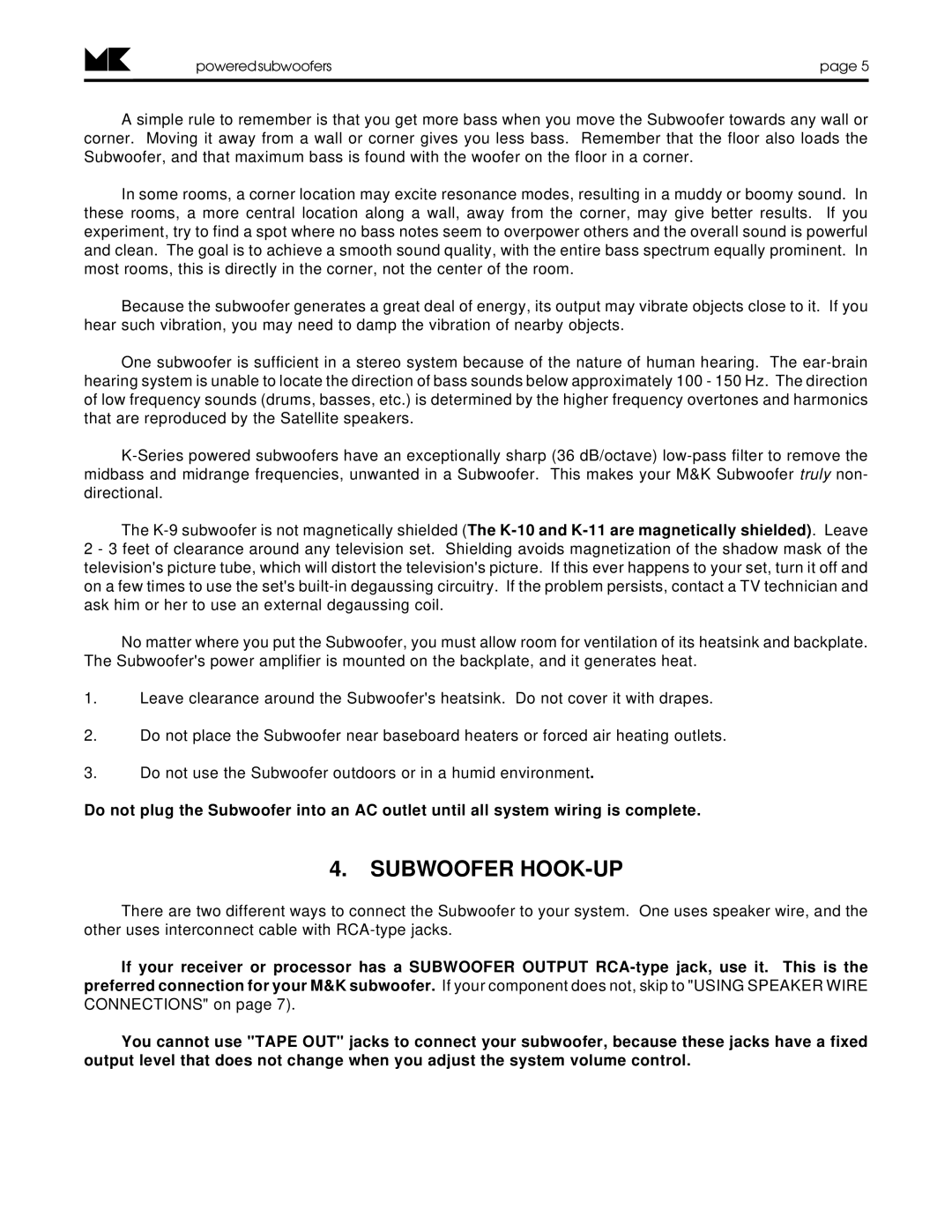poweredsubwoofers | page 5 |
|
|
A simple rule to remember is that you get more bass when you move the Subwoofer towards any wall or corner. Moving it away from a wall or corner gives you less bass. Remember that the floor also loads the Subwoofer, and that maximum bass is found with the woofer on the floor in a corner.
In some rooms, a corner location may excite resonance modes, resulting in a muddy or boomy sound. In these rooms, a more central location along a wall, away from the corner, may give better results. If you experiment, try to find a spot where no bass notes seem to overpower others and the overall sound is powerful and clean. The goal is to achieve a smooth sound quality, with the entire bass spectrum equally prominent. In most rooms, this is directly in the corner, not the center of the room.
Because the subwoofer generates a great deal of energy, its output may vibrate objects close to it. If you hear such vibration, you may need to damp the vibration of nearby objects.
One subwoofer is sufficient in a stereo system because of the nature of human hearing. The
The
No matter where you put the Subwoofer, you must allow room for ventilation of its heatsink and backplate. The Subwoofer's power amplifier is mounted on the backplate, and it generates heat.
1.Leave clearance around the Subwoofer's heatsink. Do not cover it with drapes.
2.Do not place the Subwoofer near baseboard heaters or forced air heating outlets.
3.Do not use the Subwoofer outdoors or in a humid environment.
Do not plug the Subwoofer into an AC outlet until all system wiring is complete.
4.SUBWOOFER HOOK-UP
There are two different ways to connect the Subwoofer to your system. One uses speaker wire, and the other uses interconnect cable with
If your receiver or processor has a SUBWOOFER OUTPUT
You cannot use "TAPE OUT" jacks to connect your subwoofer, because these jacks have a fixed output level that does not change when you adjust the system volume control.
